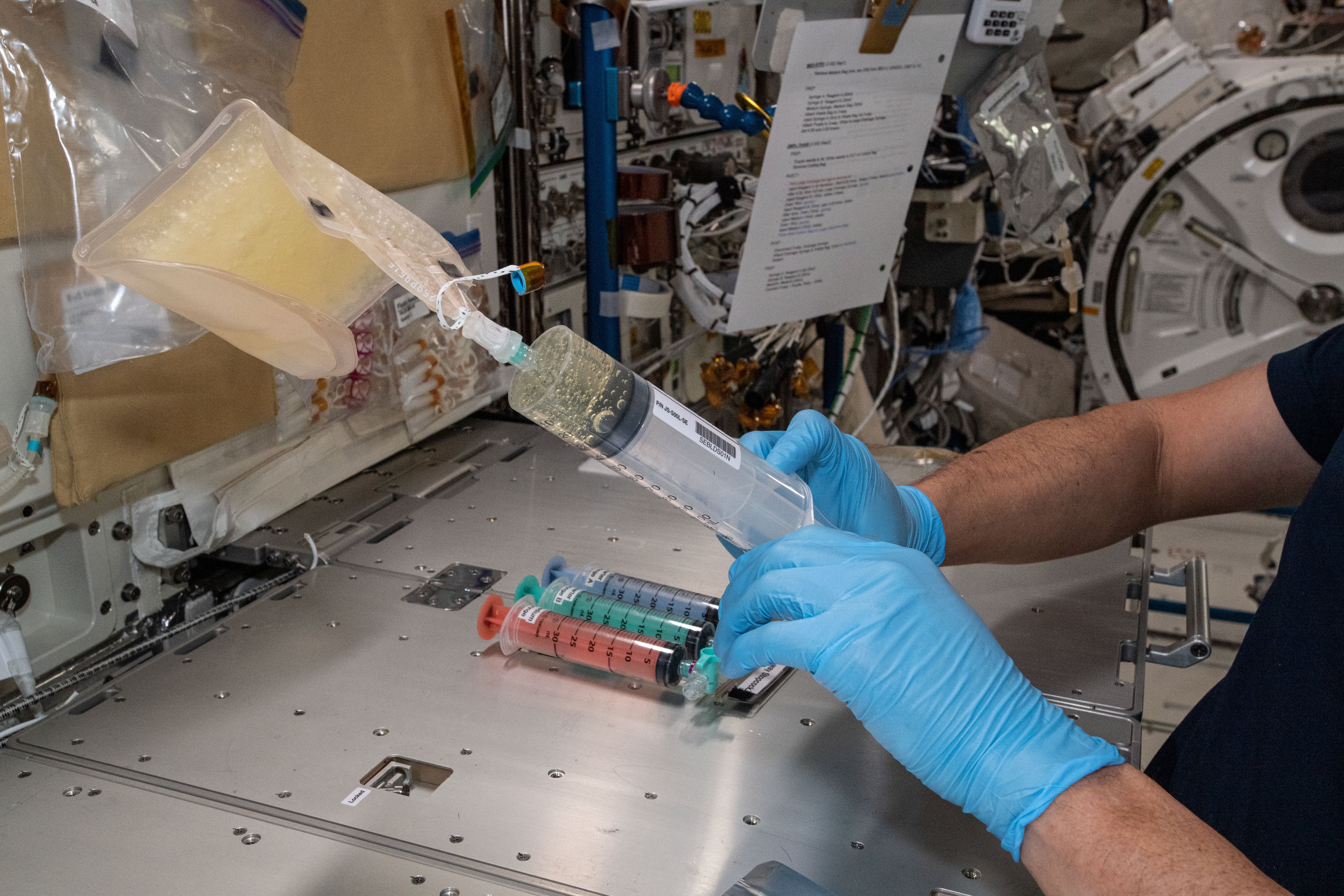- post-flight analysis
[Space Embryo]
Early Mammalian Embryogenesis Under Microgravity in Space
- Biology and Biotechnology
ISS Science for Everyone
SCIENCE OBJECTIVES FOR EVERYONE
Mammalian Early Embryogenesis Under Microgravity State in Space (Space Embryo) studies the developmental potential of mammalian embryos in microgravity. Microgravity may affect preimplantation embryo development in mammalian species, but until now most studies of reproduction in space were limited to fish or amphibian species. Researchers plan to culture mouse embryos for four days to observe whether they achieve normal development.
Experiment Description
RESEARCH OVERVIEW
- Sustaining life beyond Earth requires a clear understanding of how the space environment affects key phases of mammalian reproduction and development, including humans.
- The Mammalian Early Embryogenesis Under Microgravity State in Space (Space Embryo) investigation uses cryopreserved 2-cell mouse embryos for this study. The frozen embryos are used to overcome some of the challenges of handling and culturing mammalian embryos in the microgravity environment.
- The results from Space Embryo may suggest that microgravity could have an impact on pre-implantation embryo development in mammalian species.
DESCRIPTION
It is necessary to understand how the space environment influences the stage of development in mammals, including humans, to maintain life in the microgravity, or in a reduced gravity environment – approximating the Moon, Mars, or other planetary-like bodies in the Solar System.
With the ability to perceive stimuli of the oocyte/embryo (80-or 100 μm) and the precise cultivation period (4 days) required, most studies about embryonic development in space have been limited to non-mammals, such as fish or amphibians, because of the difficulty of performing these experiments on mammals. Since the reproductive system of these animals is oviparous (egg-laying) and not placenta-forming, the development is fundamentally different from viviparity (giving live-birth) of mammals. Therefore, it is not possible to presume the reproduction of mammals in space from the study results of non-mammals.
The likelihood that an identified risk in development could occur to the mammal embryo aboard the International Space Station (ISS) is studied in the Mammalian Early Embryogenesis Under Microgravity State in Space (Space Embryo) investigation, and procedures have been developed to achieve mammalian embryo cultivation. Freezing preserves the 2-cell mouse embryos that are launched to the ISS. These embryos are cultivated for 4 days after thawing, and it will be determined whether embryos of the mammals can normally develop under microgravity conditions. Cell differentiation to inner cell mass (origin of fetus) and trophectoderm (origin of placenta), genetic profiles, and biochemistry features are analyzed after recovery to Earth.
Media Gallery

Applications
SPACE APPLICATIONS
To sustain life on future long-term space missions, and eventual stays on other planets, requires a clear understanding of how the space environment affects key phases of reproduction in mammals, including humans.
EARTH APPLICATIONS
Space Embryo helps to identify the mechanism of the first differentiation of fertilized mammalian eggs. This contributes to the science of embryology and could support advances in medical care on Earth.
Operations
OPERATIONAL REQUIREMENTS AND PROTOCOLS
A day before the investigation begins, the culture medium in the culture solution bag is thawed and equilibrated beforehand in the Cell Biology Experiment Facility (CBEF). The required conditions are a temperature of 37°C, and under a 5% CO2 environment.
At the start of the investigation, the cryopreserved culture bags (8 in total) are removed from the Minus Eighty Laboratory Freezer for ISS (MELFI), thawed out, and then the bags are filled with culture medium. After 1 hour, the culture medium is replaced with fresh medium, placed in the Cell Biology Experiment Facility (CBEF) at conditions of 5% CO2 and a temperature of 37°C, and incubated for 4 days.
At the end of the investigation run, the samples are fixed with a 0.99% paraformaldehyde (PFA) fixative and replaced with phosphate buffered saline (PBS) after 1 hour. The samples are stored in MELFI and returned to Earth under refrigerated storage.
Publications
PRINCIPAL INVESTIGATOR(S)
WAKAYAMA Teruhiko [University of Yamanashi]
Unless specified otherwise, rights to all images belong to ©JAXA



